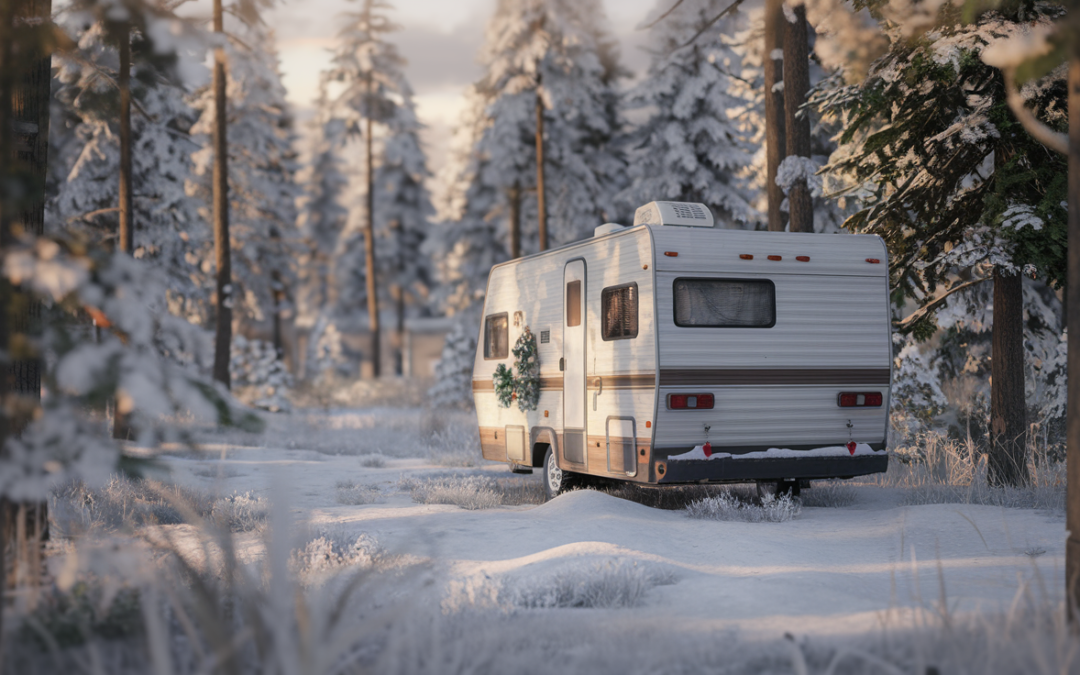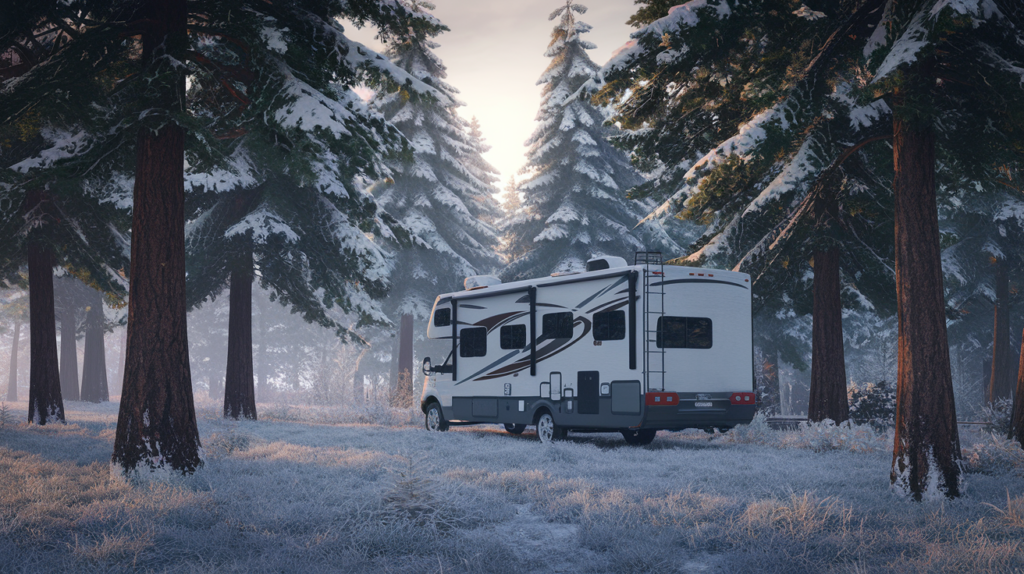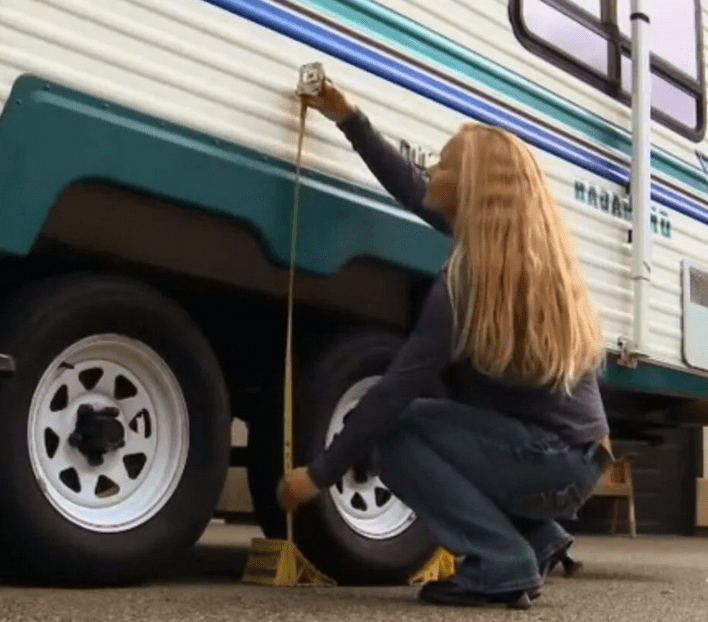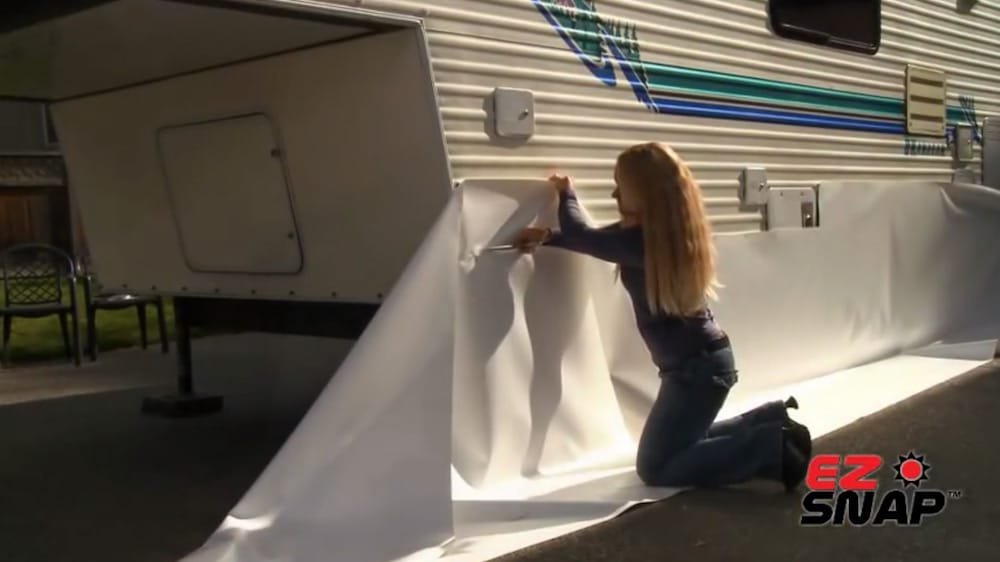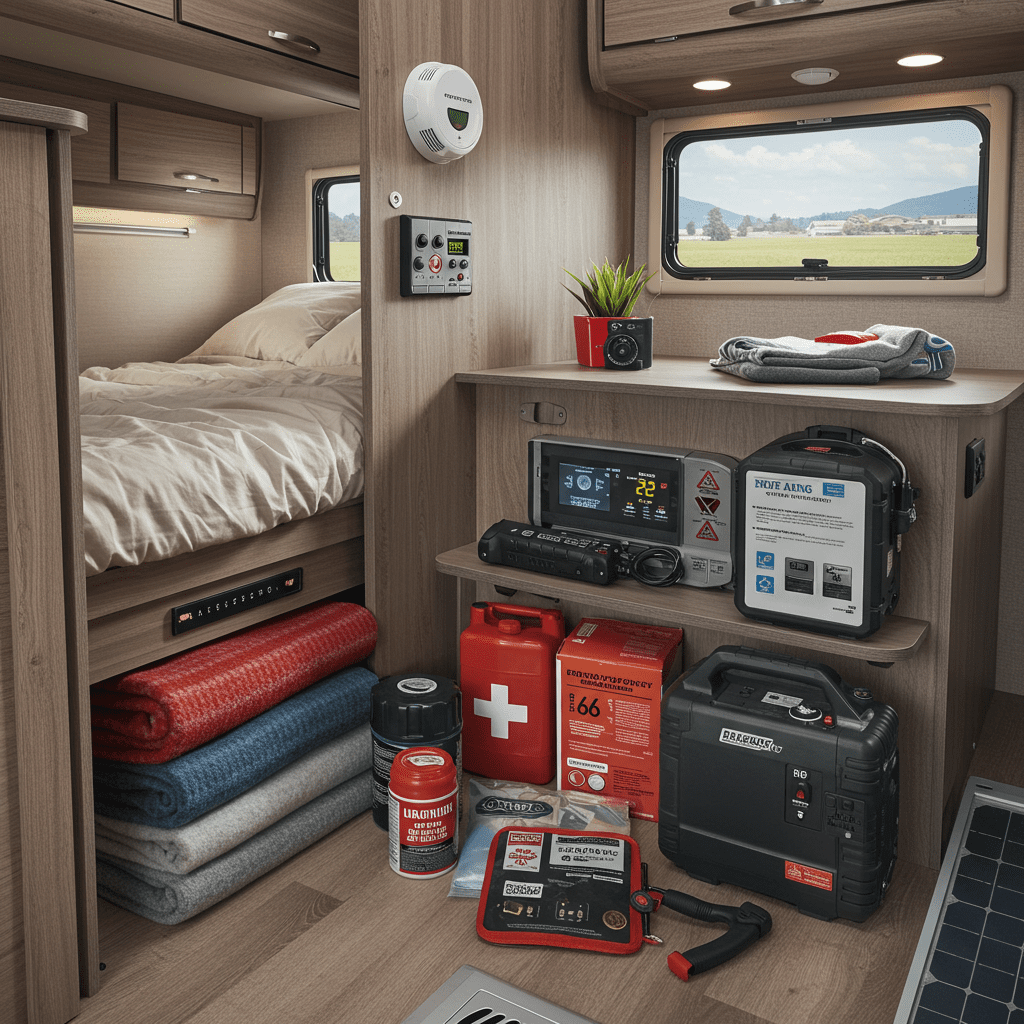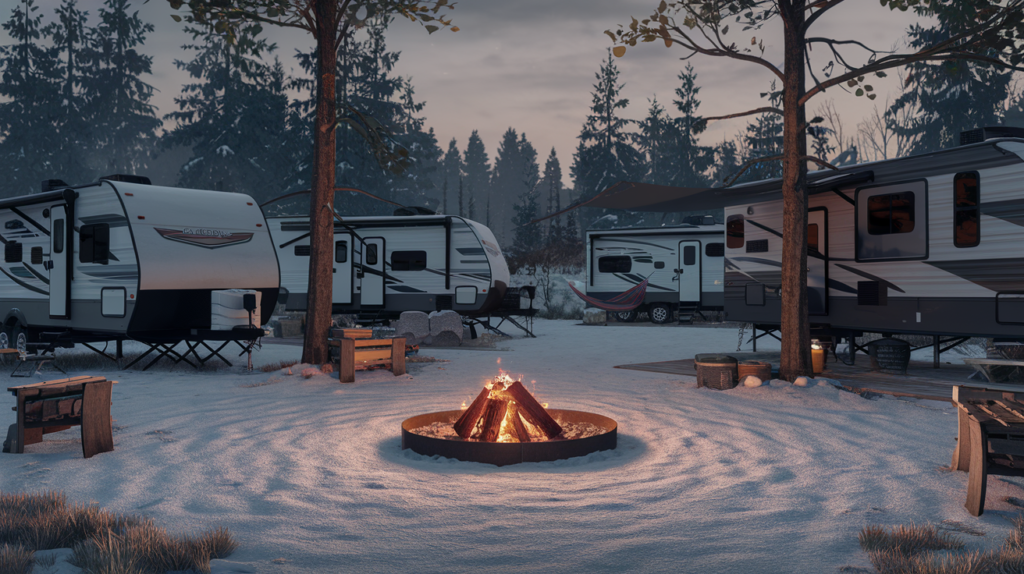Off-season RV camping can be incredibly peaceful and picturesque, but plunging temperatures introduce unique challenges. Whether you’re navigating icy roads, bracing for sub-zero winds, or keeping your batteries charged, preparation is key. This guide focuses on the practical know-how you need for winter boondocking success, from understanding temperature ranges to troubleshooting common cold-weather issues.
1. Why Winter Boondocking?
Summer campsites can be crowded and noisy. Venturing out when temperatures dip below freezing gives you access to serene landscapes and often lower campsite fees—sometimes even free or nearly empty public land. Not only can you enjoy breathtaking winter scenery, but you also hone skills that sharpen your self-reliance in challenging conditions.
The key appeal lies in solitude and the ability to witness nature in its quiet, dormant state. Imagine waking up to crystal-clear skies and a snowy panorama, all while staying warm and comfortable in your well-prepared RV.
2. Different RV Types & Cold-Weather Performance
Not all RVs are created equal when it comes to winter camping. If you own a four-season RV model, you likely already have extra insulation in walls and holding tanks designed to handle below-freezing temperatures. However, if you’re camping in a standard travel trailer or older Class C, you may need additional steps to protect your plumbing and boost insulation.
Motorized RVs (Class A, B, and C)
Class A motorhomes often feature robust heating systems and can be better insulated, but they’re also bigger targets for wind and may require more fuel in extreme conditions. Class B camper vans have a smaller interior space to heat but may lack thick insulation layers. Class C units blend features from both, but older models can have under-insulated cab-over sections vulnerable to cold air.
Examples: Many Class A diesel pushers from higher-end brands include “winter packages,” but always verify the level of insulation offered. Some owners in colder states praise specific models from Tiffin or Winnebago for improved cold-weather performance.
Towables (Fifth Wheels, Travel Trailers, Pop-Ups)
Fifth wheels designed for four-season use often include heated underbellies and dual-pane windows. Standard travel trailers can be adapted with foam board insulation and tank heaters, but pop-ups or hybrids may struggle to maintain heat due to soft-side walls. If you’re in a pop-up, focus on windbreaks and insulating the fabric with additional layers or thermal blankets.
Examples: Models like the Northwood Arctic Fox or Lance travel trailers are frequently mentioned in RV forums for their better cold-weather capabilities, including enclosed underbellies and upgraded insulation.
Pro Tip: Before committing to a sub-zero trip in any RV type, research your model’s recommended operating temperatures and known problem areas. Online forums and owner groups can be gold mines for specific tips on your exact rig.
3. Understanding Temperature Ranges
“Below freezing” can mean anything from 32°F (0°C) down to well into negative territory. Your approach to insulation, heating, and water management may differ significantly depending on whether you’re hovering around the freezing mark or braving -10°F (-23°C) nights. Here’s a general breakdown:
- 32°F to 20°F (0°C to -7°C): Light freezing conditions. Basic insulation, heated water hoses, and a decent RV furnace can suffice if you manage moisture and drafts.
- 20°F to 0°F (-7°C to -18°C): Moderate freeze where you’ll need heavier insulation (e.g., foam board, thermal curtains) and possibly tank heating pads.
- Below 0°F (-18°C and lower): Extreme cold. Requires robust strategies including double-insulated windows, continuous furnace operation (or supplemental heating), and careful battery monitoring to prevent outages.
Always monitor daytime highs and overnight lows. Daytime thawing and nighttime freezing can stress pipes and seals. Checking the forecast helps you anticipate fuel and power requirements.
4. Preparing Your RV for Extreme Cold
An ounce of prevention is worth a pound of repairs when it comes to winter boondocking. Start with the basics:
- Seal and Insulate: Identify areas prone to leaks or drafts. Use weather-resistant caulk and foam strips on windows, vents, and door frames. Consider installing foam board around the underbelly or exposed storage compartments.
- Protect Your Tanks: Adding heating pads to fresh water and gray/black tanks can prevent freezing. Skirt the bottom of your RV if possible to shield pipes and valves from windchill.
- Ventilation vs. Condensation: Running your furnace in a sealed RV can create moisture. Balance heat retention with slight ventilation—like cracking a roof vent—to reduce dampness.
Comparing Common Insulation Products
| Product | Pros | Cons |
|---|---|---|
| Foam Board (Polystyrene) | High R-value, moisture-resistant, easy to cut and fit | May need tape sealing for best results, bulkier in tight spaces |
| Reflective Foil (Bubble Core) | Lightweight, excellent for windows, can reflect radiant heat | Requires an air gap for best performance, less effective in extreme cold alone |
| Spray Foam | Fills irregular gaps perfectly, very high insulating capacity | Can be messy if DIY, may require professional application |
| EZ Snap RV Skirting | Custom-fit RV skirting, reduces heating costs, prevents frozen pipes, easy no-drill installation | Higher upfront cost, requires accurate measurements for best fit |
5. Battery Management in Freezing Conditions
Chemical reactions in batteries slow down in cold environments, reducing capacity and recharge efficiency. If you’re relying on lead-acid batteries, their performance can drop dramatically below 32°F (0°C). Lithium batteries fare better in the cold but may need specialized heating elements or management systems to charge safely in sub-freezing temperatures.
Battery Care Tips:
- Insulation Box or Wrap: Enclose batteries in an insulated compartment or use thermal wraps designed for cold-weather battery maintenance.
- Monitor Voltage Regularly: Invest in a reliable battery monitor or use your RV’s built-in system to watch for drastic voltage drops overnight.
- Charging Protocols: Some lithium battery packs won’t charge if internal temperatures are too low. Check your manufacturer’s guidelines for safe charging ranges.
- Generator or Solar Backup: In extreme cold, your system might drain faster. Having a generator or well-placed solar panels ensures you don’t wake up with dead batteries.
If you’re considering an upgrade, many RV owners recommend low-temperature lithium batteries from brands like Battle Born or Renogy. The initial cost can be higher, but the improved cold-weather performance often justifies the investment.
6. Essential Safety Protocols
Freezing temperatures and remote locations demand heightened caution. Carbon monoxide (CO) leaks can become a serious threat when using furnaces or portable heaters in an enclosed space. Regularly test your CO detector, and never block your RV’s exhaust vents with snow or ice.
Keep a well-stocked emergency kit with:
- Space blankets and hand warmers
- Extra fuel for your generator or propane system
- Snow shovel, traction pads, and ice melt for safe mobility around your campsite
- LED lanterns, flashlights, and backup phone chargers
Always inform a friend or family member of your travel route and expected return date. In extreme weather, quick communication can be lifesaving if your RV is immobilized or if you encounter medical issues.
7. Troubleshooting Common Winter Issues
Even experienced winter boondockers encounter hiccups. Here’s a quick reference guide for common problems:
Frozen Water Lines
Symptoms: Weak or no water flow, unusual noises in pipes.
Solution: Apply gentle heat using a hairdryer or heated tape. Open faucets to encourage flow once partial thawing occurs. Insulate exposed sections to prevent recurrence.
Excessive Condensation
Symptoms: Foggy windows, dripping ceilings, or mold forming around vents.
Solution: Increase ventilation by cracking a vent or window. Use a small dehumidifier if you have the power capacity. Check for leaks that could worsen moisture buildup.
Battery Drain
Symptoms: Rapid voltage drop, furnace shutting off unexpectedly.
Solution: Warm your battery compartment, reduce electrical loads (e.g., switch to LED lighting), and recharge via generator or solar panels.
Furnace Malfunction
Symptoms: Blowing cold air, frequent cycling, or failing to ignite.
Solution: Check propane levels and furnace vents for blockages. If the issue persists, consult a certified RV technician, especially in sub-zero temperatures where timely repairs are crucial.
8. Real-World Case Studies
A Reddit user shared their experience of winter camping near Glacier National Park in temperatures as low as -5°F (-20°C). They emphasized the importance of insulating the RV’s underbelly with foam board and installing heat pads on tanks to keep everything functional. Their key takeaway was the critical need for extra propane, as sub-zero temperatures rapidly deplete fuel reserves
An RV enthusiast from Colorado reported significant improvements after upgrading to low-temperature lithium batteries. In temperatures around 15°F (-9°C), they experienced a 40% increase in usable capacity compared to their previous lead-acid batteries. The upgrade also resulted in faster recharge times when solar panels were exposed to sunligh
These real-world accounts illustrate how proper planning, the right gear, and a willingness to adapt can overcome winter’s toughest challenges.
9. Conclusion & Next Steps
Winter boondocking demands a proactive mindset: from insulating your RV against harsh winds to keeping your batteries healthy in freezing temperatures. By understanding temperature ranges, tailoring your setup to your specific RV type, and following best practices for safety, you can enjoy the quiet beauty of off-season camping without sacrificing comfort.
Ready to fine-tune your cold-weather strategy? Explore additional resources below for more in-depth guides on everything from generator maintenance to advanced solar setups. With the right preparation, winter can become your favorite season to hit the road.

